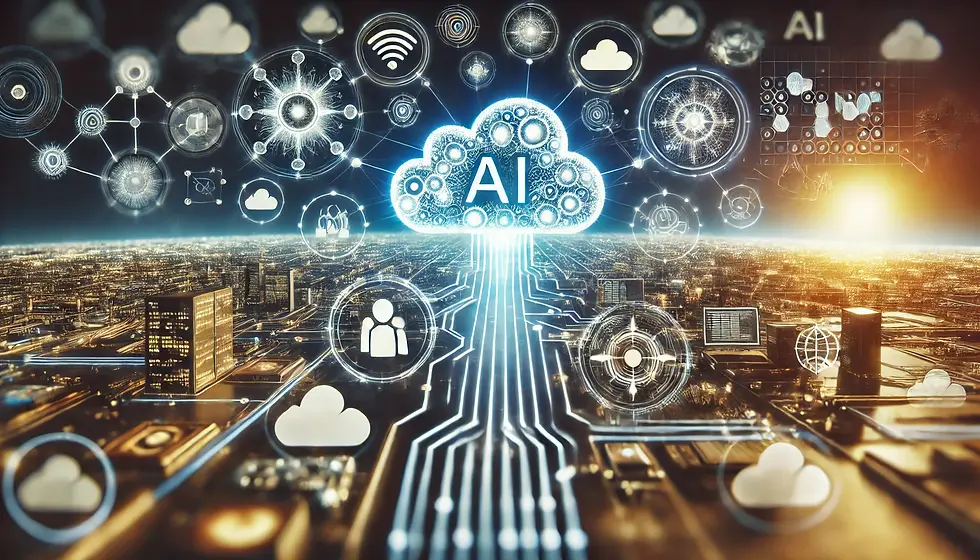2025 Workplace Trends: How Cloud Tech is Shaping the Future of Work
- SystemsCloud

- Nov 20, 2024
- 3 min read
As we move into 2025, digital transformation is taking centre stage, and cloud computing is the star. For workplaces that want to stay agile and efficient, cloud-based tech is making it easier to bring people, processes, and productivity together.
Let’s look at the top trends expected to define the next year.

1. AI-Driven Cloud Services: Enhancing Efficiency Without Extra Hardware
AI in the cloud is set to be a game-changer for businesses in 2025. By merging AI with cloud services, companies can access high-level insights and automation without needing hefty on-premises infrastructure. Whether it’s speeding up data processing or helping teams predict business trends, AI will drive smart cloud services that make daily tasks easier.
Example: Companies can use AI to automate data analysis, improve customer experience through chatbots, and even spot potential system vulnerabilities.
Source: Research from G2 (source)
2. Hybrid and Multi-Cloud Strategies: Flexibility Meets Resilience
Sticking to just one cloud provider? That’s so 2020. Hybrid and multi-cloud setups are the way forward, allowing businesses to spread their data and applications across different providers. This gives companies the flexibility to tailor their infrastructure to specific needs, prevents vendor lock-in, and makes disaster recovery much smoother.
Why It Matters: Having data on multiple clouds means if one provider experiences downtime, others can pick up the slack, keeping businesses up and running.
Source: Insights from CloudDefense.ai (source)
3. New Wave of Cloud Security: Advanced Measures for a Secure Workplace
Cybersecurity is a constant battle, and with the increased reliance on cloud tech, the stakes are higher than ever. Expect more businesses to turn to integrated security protocols and specialised AI-driven tools to protect data from breaches. This includes everything from automatic threat detection to real-time response measures.
Interesting Fact: Gartner predicts a major boost in cloud-specific security roles as businesses focus on keeping digital assets safe.
Source: Gartner’s tech trend overview (source)
4. Virtual Desktop Infrastructure (VDI) Growth: Supporting Flexible Workplaces
With remote and hybrid work now the norm, more companies are investing in Virtual Desktop Infrastructure (VDI). Virtual desktops allow employees to access their workspace from anywhere, reducing the need for physical office setups and helping businesses stay flexible. By 2029, the VDI market is expected to reach USD 22.83 billion—a testament to the staying power of remote work.
Key Benefit: VDIs offer a cost-effective way for businesses to scale, allowing new hires to start remotely with minimal setup time and expense.
Source: Mordor Intelligence report (source)

5. Edge Computing: Bringing Data Processing Closer to the Source
Edge computing processes data closer to where it’s created, reducing lag and improving efficiency—especially useful for IoT-heavy industries. This trend is set to reshape data handling for businesses that rely on fast, real-time data processing, like manufacturing and logistics.
In Practice: Edge computing can make real-time analytics for IoT devices far more efficient, cutting down on cloud transfer costs and improving response times.
Source: CloudDefense.ai on the future of edge computing (source)
Staying Agile in a Fast-Evolving Digital World
Cloud technology in 2025 is all about flexibility, efficiency, and security. With new AI tools, multi-cloud options, enhanced security measures, virtual desktops, and edge computing, businesses have more options than ever to adapt and thrive.
For organisations ready to lean into these trends, the digital workplace will become not just a place to work, but a tool to succeed.








コメント